Chmod Linux

How To Use Chmod Command In Linux Explained With Examples

Linux File Permissions Tutorial How To View And Change Permission

What Is Chmod 777

9 Quick Chmod Command Examples In Linux

Linux File Permission Change By Chmod Command In Linux Guide For Beginners

Chown And Chmod Command Usage In Linux System Develop Paper
Sudo chmod u+w myfolder to add the write permission to the username user.

Chmod linux. $ chmod g+x app.sh Change File Mode For Other. But in Linux, ownership is a massive part of file security, with file permissions providing the remainder of it. Unlike in Unix-like OSes, Windows (and DOS) users don't have to use anything like chmod +x to make it so they can launch their scripts the same way they launch executable binaries.
It is dangerous to operate recursively on '/' chmod:. The chmod command in Linux is used to change file and directory permissions using either text (symbolic) or numeric (octal) notation. By using this command, we can set the read, write, and execute permissions for all three of the permission groups (Owner, Group and Other) in Linux.
Chmod stands for change mode, which changes the file or directory mode bits. The chmod command with the -R options allows you to recursively change the file’s permissions. The chmod command modifies the permission mode of objects in the system.
Chmod command is used in two ways :. Chmod command in Linux What is chmod?. It’s usually used when installing and configuring various services and features in a Linux system.
Chmod 755 Chmod 755 (chmod a+rwx,g-w,o-w) sets permissions so that, (U)ser / owner can read, can write and can execute. $ chmod o+x app.sh Change File Mode For All. Linux chmod command is used to change the access permissions of files and directories.
Even, it ignores the symbolic links come across recursive directory traversal. The command is usually used together with a set of octal notations or alphabetical characters. After that, you will be able to run it without using the sh or bash commands.
(G)roup can read, can't write and can execute. If you are new to Linux, and are looking for a way to change file/directory permissions through the command line, you'll be glad to know there exists a command - dubbed chmod - that lets you easily do this. Sudo chmod g+w myfolder to add the write permission to the group.
This command is used for changing the mode of access. Chmod - Unix, Linux Command - chmod - To change access permissions, change mode. Chmod Command in Linux Linux File Permission Introduction to Linux File Permission.
Chmod command in UNIX and Linux allows modifying permissions not just on text format which is more readable but also on numeric format where combination of permissions are represented in octal format e.g. It takes the following syntax:. Chmod command is useful to change permission for Files and folders in Linux/Unix.
How to use chmod?. It is one of the most used and important commands in the set of Linux security commands. Using symbols (alphanumerical characters) using the octal notation method.
Here are some command chmod commands with their explanation:. Chmod is a great Linux command for manipulating file and directory permissions. 777 where first digit is for user, second is for group and 3 rd is for others.
You can read chmod u+r as "user plus read," as it gives the user read permission. File/Directory permission is either Read or Write or executable for either user or group or others. Chmod ugo+rwx foldername to give read, write, and execute to everyone.
Sudo usermod -a -G groupname username and then execute. This tutorial covers how to use the chmod command to change the access permissions of files and directories. To combine these, just add the numbers together:.
To recursively set permissions of files based on their type, use chmod in combination with the find command. Chmod 444 file - Allow read permission to owner and group and world chmod 777 file - Allow everyone to read, write, and execute. The highly productive Linux system offers various levels of permission to ensure that the user has enough ways to interact with files and directories.
The chmod command in Linux/Unix is abbreviated as CHange MODe. How to Change Groups of Files and Directories in Linux. We can enable the execution right of the all users in a file with o like below.
The chmod command is used to change the file or directory access permissions. Actually, chmod Command in Linux plays a greater role to keep all the files and directories of the system safe and secure so that no unauthorized person. The chmod system call cannot change their permissions.
In some cases we can see the +x without a definition. Not to be confused with chown , which is another system-level command on Unix-like systems that stands for "change owner" and lets you assign ownership of a file to another user, or chgrp. The command that executes such tasks is the chmod command.
Chmod permission file_name There are two ways to define permission:. The owner can read, write and execute. There are two ways to run the bash file.
One set for the owner of the file, another set for the members of the file’s group, and a final set for everyone else. But if you want to add this user to the group associated with "myfolder", you can run. The basic syntax is:.
Use the chown and chmod commands to secure file access on your system. It is used to change the permission for files and folders. The Linux implementation of this interface may differ (consult the corresponding Linux manual page for details of Linux behavior), or the interface may not be implemented on Linux.
Therefore, Joe can access any file, of which he knows the name, in Fred's home directory. Now if you write down 1 st digit in binary format it will be written as 111 on which 1 st digit is for read. Users can simply modify file permissions using the chmod (change mode) command.
This type of restriction is useful for effective file/folder management, securing system and providing a level …. These permissions are given to file/folder to provide a secure environment to the OS, efficient management of a file and high-level access to the users accessing the files/ folders. The command is relatively simple to use and involves using.
Linux File Permission :. Using octal value & position:. Mykyta Dolmatov / Getty Images.
The request is filtered by the umask. In this, the 9 characters from 2nd to 10th position represents the permissions for the 3 types of users. As all Linux users, you will at some point need to modify the permission settings of a file/directory.
To put it simply, use chmod command to change the file or directory permissions. Sets the permission for owner, group and others with octal values , 4 for read , 2 for write , 1 for execute and. In the terminal, the command to use to change file permission is chmod.
Looking for online definition of CHMOD or what CHMOD stands for?. By issuing these commands, you can change groups of files and directories in Linux. Chmod doesn't really apply to those OSes and "batch file" was in scare quotes.
The chmod command, like other commands, can be executed from the command line or through a script file. Multi-user systems, such as Linux, require setting up and managing file permissions that ensure only authorized users have access to files they are supposed to. To read, write and execute.
Linux file permission is a very important aspects in terms of security issues for the system administrator of Linux Operating System. In short, “chmod 777” means making the file readable, writable and executable. Chmod a=r foldername to give only read permission for everyone.
Chmod ( Change Mode ) is a command line utility in Unix , Linux and other Unix like systems to change the read, write, execute permissions of a file for owner , group and others. Now if we use chmod, it does not allow to modify root permission # chmod -c --recursive 755 / chmod:. In this tutorial, I am going through the steps to create a bash script and to make the script executable using the chmod command.
Only the root user or a regular user with sudo privileges can change file or directory permissions. In this tutorial, we will discuss the basics of this command as well as provide examples explaining how it can be used in various scenarios. However, for each symbolic link listed on the command line, chmod changes the permissions of the pointed-to file.
If you need to list a file's permissions, use the ls command. On Unix-like systems, chmod is a system-level command that stands for "change mode" and allows you to manually change the permission settings of a file. This is not a problem since the permissions of symbolic links are never used.
View (u)ser, (g)roup and (o)thers permissions for chmod 655 (chmod a+rwx,u-x,g-w,o-w) or use free online chmod calculator to modify permissions easily. In this article, you will learn how to change permissions of any file or directory with chmod command. Vijay Bhaskar 10/10/12 1 Comments Chmod (change mode) is one of the most frequently used commands in unix or linux operating system.
This means that owner, group and everyone has the all the rights i.e. In Linux, you will often need to make use of the chmod command. Linux chmod command is used to change access permissions of files and directories.
What is chmod ?. The name speaks for itself. The OP here (last seen 14) wanted to write and run something similar to a batch file.
There are three sets of permissions. Chmod never changes the permissions of symbolic links;. Chmod -R 755 will set this as permissions to all files and folders in the tree.
Additional restrictions may cause the set-user-ID and set-group-ID bits of MODE or RFILE to be ignored. Linux chmod command is one of the most commonly used commands especially by system administrators when assigning modifying file and folder permissions. Chmod stands for change mode.
15-05-19 In Unix-like operating systems, the chmod command is used to change the access mode of a file. Linux - Solution 1:. This is a dangerous permission to have on any file and you should avoid using it.
It stands for change mode. Chmod stands for “Change Mode” and is used to modify the permissions of files and directories in a Linux based system. $ chmod OPTIONS MODE filename.
You can pass more than one file or directory. I would like to change permissions of a folder and all its sub folders and files in one step (command) in Linux. How to set chmod for a folder and all of its subfolders and files in Linux Ubuntu Terminal ?.
We have already described the Linux file permissions. Chmod command in Linux with examples Last Updated:. Following is a sample of ls -l command output.
The name is an abbreviation of change mode. These flags are called file permissions or modes, as in "mode of access." The command name chmod stands for "change mode." It restricts the way a file can be accessed. READ NEXT › How to Turn On Handwashing Detection on the Apple Watch.
On Unix-like operating systems, a set of flags associated with each file determines who can access that file, and how they can access it. With the concepts mentioned in this article, you are equipped with sufficient knowledge to handle permissions in Linux-based distros. In Linux/Unix like operating system, the chmod command is used to change the access mode of a file.
Use --no-preserve-root to override this failsafe Linux Permissions Syntax. The first one is by using the bash command and the. I have already tried the below command but it works only for the mentioned folder:.
In Linux, access to the files is managed through the file permissions, attributes, and ownership. There will be a Permission tab where you can change the file permissions. To know about the access permissions of a file or directory, use the ls -l command as shown below:.
To change permission using the Linux chmod command we have to follow some syntax and rules. It is also used to change special mode flags. The chmod command changes the access permissions of files and folders.
NAME top chmod, fchmodat — change mode of a file relative to directory file descriptor. How To Change File Permissions In Linux Using ‘chmod’ Command. CHMOD is listed in the World's largest and most authoritative dictionary database of abbreviations and acronyms The Free Dictionary.
Chmod 775 /opt/lampp/htdocs Is there a way to set chmod 755 for /opt/lampp/htdocs and all of its content including subfolders and files?. In Unix and Unix-like operating systems, chmod is the command and system call which is used to change the access permissions of file system objects (files and directories). It can not change the permission of symbolic links.
Chmod clears the set-group-ID bit of a regular file if the file's group ID does not match the user's effective group ID or one of the user's supplementary group IDs, unless the user has appropriate privileges. Chmod has two operating modes:. This ensures that only authorized users and processes can access files and directories.
Others is special group which covers all users in a Linux system. In Linux, you can easily change the file permissions by right-clicking the file or folder and select “Properties”. Common chmod commands and their meaning.
Chmod 0 file - Write by group chmod 002 file - Write by world chmod 100 file - execute by owner chmod 010 file - execute by group chmod 001 file - execute by world. A plus (+) symbol adds a permission, and a minus (-) symbol removes a permission. The name is an abbreviation of change mode.
(O)thers can read, can't write and can execute. The Linux command to change permissions on a file or directory is chmod, which we like to read as change file mode. If you need to change a file permission, use the chmod command.

Chmod 777 What Does It Really Mean Make Tech Easier

Chmod Wikipedia

Linux Chmod Command Javatpoint

Linux File Permissions Complete Guide Devconnected

Change File And Folder Permission On Ubuntu Chmod Chown Command In Linux Youtube
Q Tbn 3aand9gcs Trmaopb41lzfo2wl Mi6olorurkywaddbudhnw Ne1mor3ct Usqp Cau

Chmod 777 What Does This Mean Learn Linux Permissions Easy Way

Linux Permissions Posix Chmod Chown Chgrp Youtube
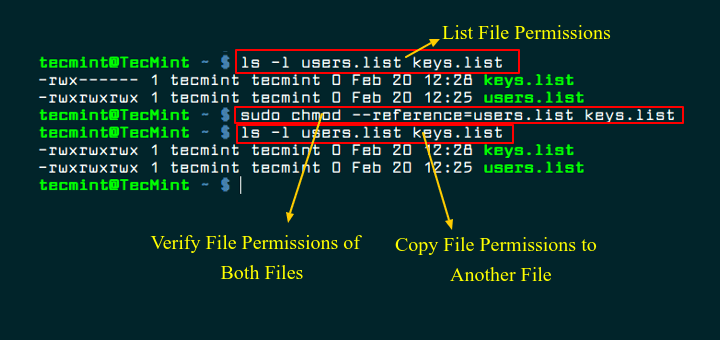
How To Copy File Permissions And Ownership To Another File In Linux

What To Do When You Can T Chmod Chmod Knowledgeacademy Io

Linux Commands 5 File Permission Chmod Youtube
Why Would Using Chmod 777 Recursively From The Root Cause A Linux Box To Not Boot I Could Understand This If I Were Limiting Permissions But Why Would Adding Permissions Cause This

Linux Chmod Command Linuxfordevices

Chmod Cheatsheet Linux

How To Change File Permissions Recursively With Chmod In Linux

Linux Chmod Chown Syntax And Chmod Chown Examples

Linux And Unix Chmod Command Knowledge Hub
:max_bytes(150000):strip_icc()/i7guGwCYcn-34e068e148ae4e918b29c86cd2d5740e.png)
Configuring Unix Linux File And Directory Access Rights

Numeric Permissions Table Linux Chmod Command Linux Permissions

Chmod Permission Denied Unix Linux Stack Exchange

Use Of Chmod Command In Linux Devopsdex

Linux Permissions An Introduction To Chmod Enable Sysadmin

Fun With Numbers In Chmod

Linux Chmod Command Linuxfordevices

9 Quick Chmod Command Examples In Linux

14 04 Chmod Not Working In A Non Super User Ask Ubuntu

How To Change File Permissions Recursively With Chmod In Linux

Linux Commands Chmod

Command Line I Can T Change Mode For Some Directories Using Chmod Ask Ubuntu

Restore Executable Permission To Chmod Command In Linux Ostechnix

The Basics Of The Chmod Command Pi My Life Up

What Is Chmod 777 How To Change File Permissions For Linux Tech Ninja Pro

Linux File Permissions Know The Reason Behind That Chmod 777 By Abhishek Chandra Medium

Advance File Permissions In Linux Geeksforgeeks

Understand Linux File Permissions Using Chmod And Chown Commands Programming Tips For Versatile Coders

Linux Chmod Command Linuxfordevices

8 Linux Chmod Command Examples To Understand It The Linux Juggernaut
/GettyImages-1021092796-ea8c63ee76f84bd5bf98c4222337fbb4.jpg)
How To Use The Chmod Command In Linux
Video Linux File Permissions Chmod And Chown Linux Org

Chmod 777 In Terminal The Command To Make All Changes Affect Every File And Folder Ask Ubuntu

Linux File Permissions Complete Guide Devconnected
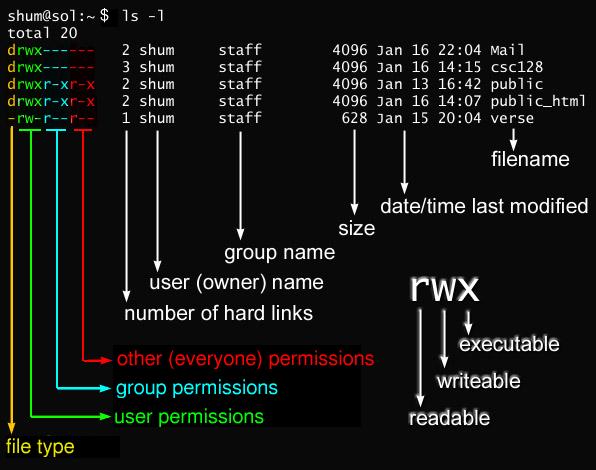
Javarevisited 10 Example Of Chmod Command In Unix Linux

How Did The Number 777 In Chmod 777 Come Out Under Linux Laptrinhx

Chmod Or File Permissions Code Blog Perlubantuan Portal

Linux Chmod Command Clearly Explained Codedodle

Modify File Permissions With Chmod Linode

A Unix And Linux Permissions Primer Daniel Miessler

Linux File Permissions And Chmod Doug Vitale Tech Blog

Unix Linux Command Chmod Linux Concept

Permissions Why Use Chmod Instead Of Chmod U Rw Go R Unix Linux Stack Exchange

Linux Command Line Basics Part 4 I Have A Pc I Have A Pc

Chmod Command In Linux Operators Used In Chmod Command

Chmod Command In Linux With Examples Geeksforgeeks

Chmod Command In Linux File Permission Settings Syntax Examples

Linux Chmod Chown Syntax And Chmod Chown Examples

File Permissions Linuxhowto Net

How To Use The Chmod Command 2 Minute Linux Tips Network World

Make Them Executable On Linux Chmod X By Erdem Sahin Medium

Linux Chmod Command Help And Examples

Understanding Linux Permissions And Chmod Usage

Explained How To Use Chmod Command Complete Guide Youtube
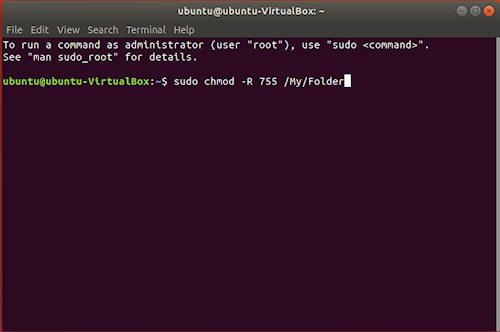
Introduction To Linux File Permissions Attributes Chmod Globo Tech

Linux Unix Permissions And Attributes Linuxsecrets

Modify File Permissions Linux

Linux Admin 101 File Permissions With Chmod Chgrp And Chown Trash Computer

Linux Chmod Command Dracula Servers Tutorials

Learning The Shell Lesson 9 Permissions

How To Copy File Permissions And Ownership To Another File In Linux

Linux Terminal File Permissions Chmod Chown And Chgrp Youtube

How To Use Chmod Command In Linux Explained With Examples

Linux Commands Most Important Linux Commands Edureka

Linux Chapter 3 Permission Management Commands Change File Permissions Chmod 777 Root A Programmer Sought
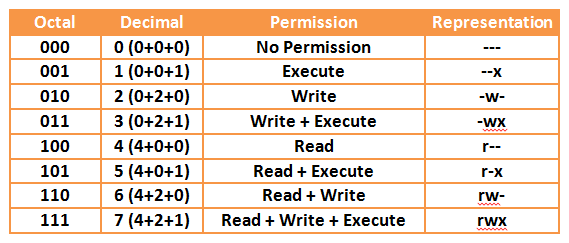
Your Own Linux Chmod Basics Of Files Directories Permissions And Use Of Chmod

Chmod 777 755 655 644 And More Permissions Linux Files Tutorials
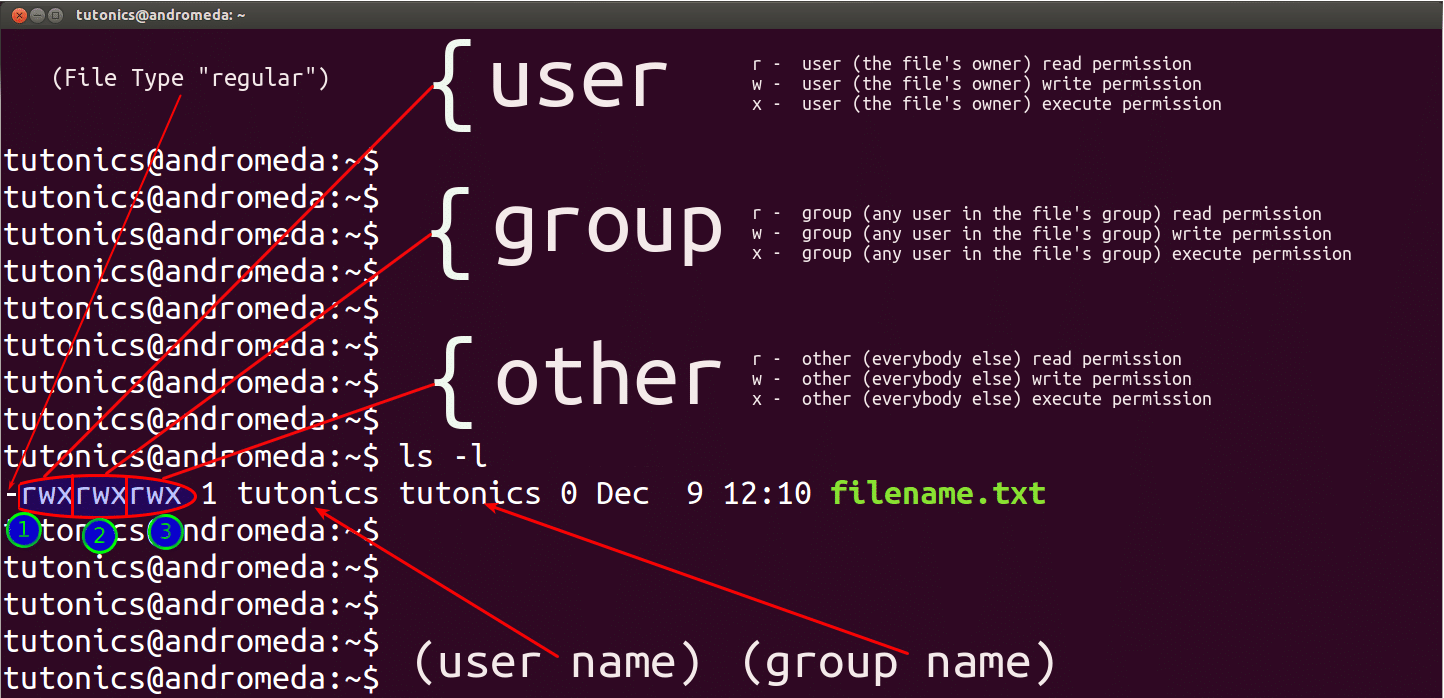
Linux File Permissions Tutorial For Beginners

How To Use Chmod And Chown Command In Linux

Chmod Command In Linux With Examples Geeksforgeeks

How To Use The Chmod Command On Linux
Q Tbn 3aand9gcs9h1s9aymhgxuiwaruv5svj Iw49oju6dx0zyl3syy0y4ft3ya Usqp Cau

How To Chmod Files Only On Linux
Q Tbn 3aand9gcrjnvlxj0s Bjlyqdmcffgnaicqwuoecwomv8yezuw Usqp Cau

How To Use The Chmod Command On Linux

Whatever You Knew About Chmod Is Wrong Alien Coders

Chmod File Execute Thinglasopa

Best Linux Chmod Command With Examples

Linux File Permission Javatpoint

11 Popular Unix Linux Chmod Command Examples To Change File Permissions Cyberithub

Chmod Command In Linux File Permissions Designlinux

Linux And Unix Chown And Chmod Command Security Problem Illustrated Nixcraft
Q Tbn 3aand9gcq1nsq3kxri7ryrifobs2rfobawbv4hezfw9 Ldf4feblahyn09 Usqp Cau
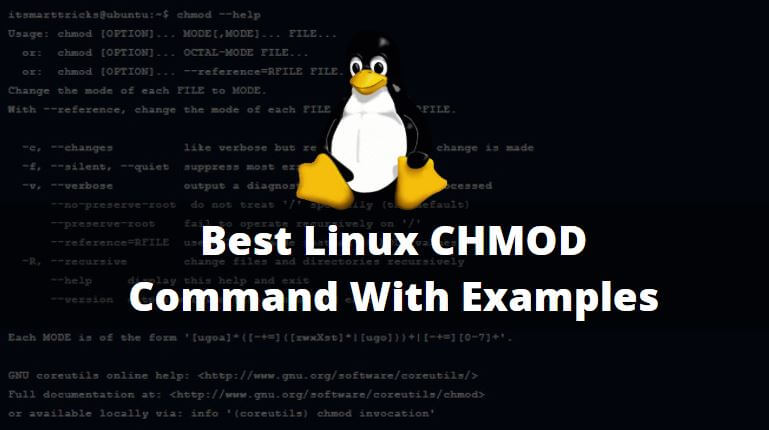
Best Linux Chmod Command With Examples It Smart Tricks
Your Own Linux Chmod Basics Of Files Directories Permissions And Use Of Chmod

Chmod File Permissions In Linux Unix

Mydiamo Guide Installation On Linux

Linux Commands Chmod Cloudaffaire

Linux Chmod Example Linux Hint

Chmod Recursive Change Permissions Recursively On Files Folders

Lock Usb Devices With Chmod Command In Linux Tutorials



